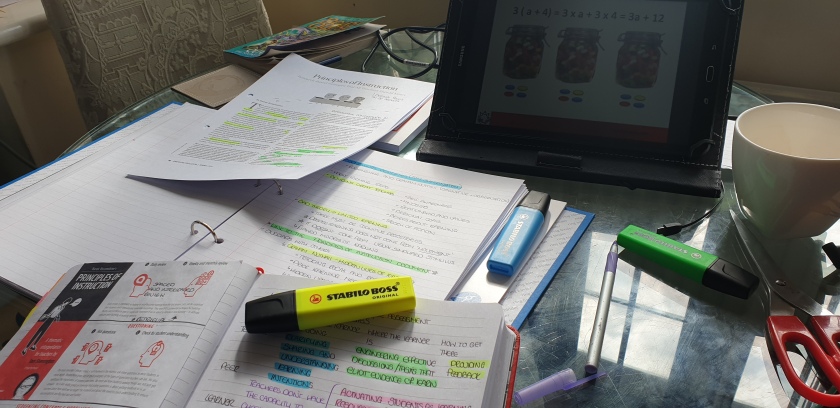In my first few years of teaching, I embarked on a journey to consider what life would look like after the levelling system was abolished. I was fortunate to be working closely with a school that was trialling one of the ways in which we could measure progress and my reflections were published with Sec:Ed:
Assessment: Life after levels at key stage 3 (sec-ed.co.uk)
During a discussion around book-marking, I found myself once again in that age old conundrum of reflection. Each and every year, I like to think of myself as not alone in my quest for the ‘better way’ of marking. Recent tweets and blogs I’ve read suggest I may have fellow explorers!
The quantity and expectations have once again hit the boiling point at which many a purple pen has disintegrated. Our backs are feeling the strain and the plastic trolleys are overloaded with books that are begging to be checked.
Fortunately, the past few years have seen a positive shift towards development of the curriculum and the acquisition of knowledge as opposed to simply this assessment driven focus that consumed the learning objectives.
The heralding of content appreciation over the tunnel-vision of exams has to be recognised as a step in the right direction, but have our marking strategies evolved too? Have all schools now recovered from the disruption of life-after levels and secured an effective and consistent way of measuring success? Have we now found that perfect balance between accountability to assess student knowledge and the ability to do so without over-burdening our workload?
The high hopes scream yes, but the realistic expectations whisper the thought that some schools are caught in same conundrum; having an established system but still questioning ‘there must be a better way?’
This is where I need input, I want to explore and consider without anyone’s fear of judgement or reprisal. I want to hear strategies that have worked and most importantly what HASN’T worked. Evolution needs to come from recognising that the right idea is often the one that came from reflection and refinement of something imperfect.
I want to hear about established strategies to levelling and marking as well as the new techniques that are being trialled.
The biggest questions I’m asking myself on this journey are of course:
- Is it sustainable?
- How was the approached received by staff and students?
- How do students know that they are making progress and how to improve?
- How is this evidence recorded for an understanding of the whole cohort?
This is where I need you! To support this journey, please complete the following form. It will only take 5 minutes but your input will be invaluable. For now, the focus will be on Key Stage 3, but I’d definitely like to explore all settings and ages.










